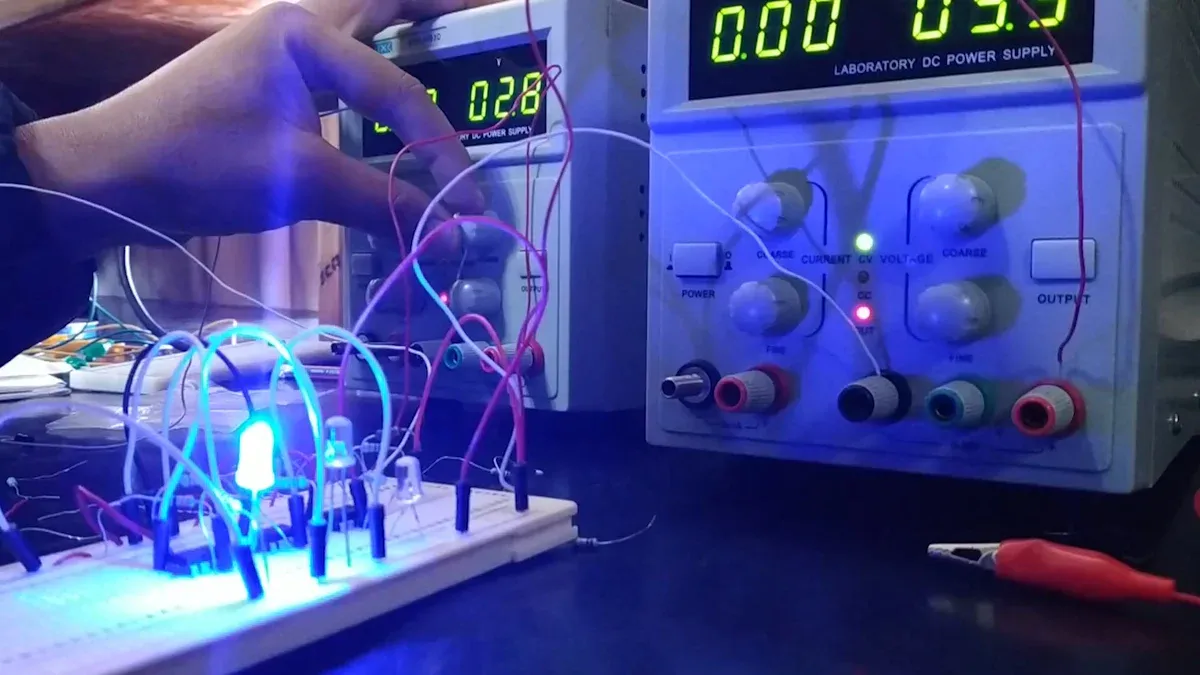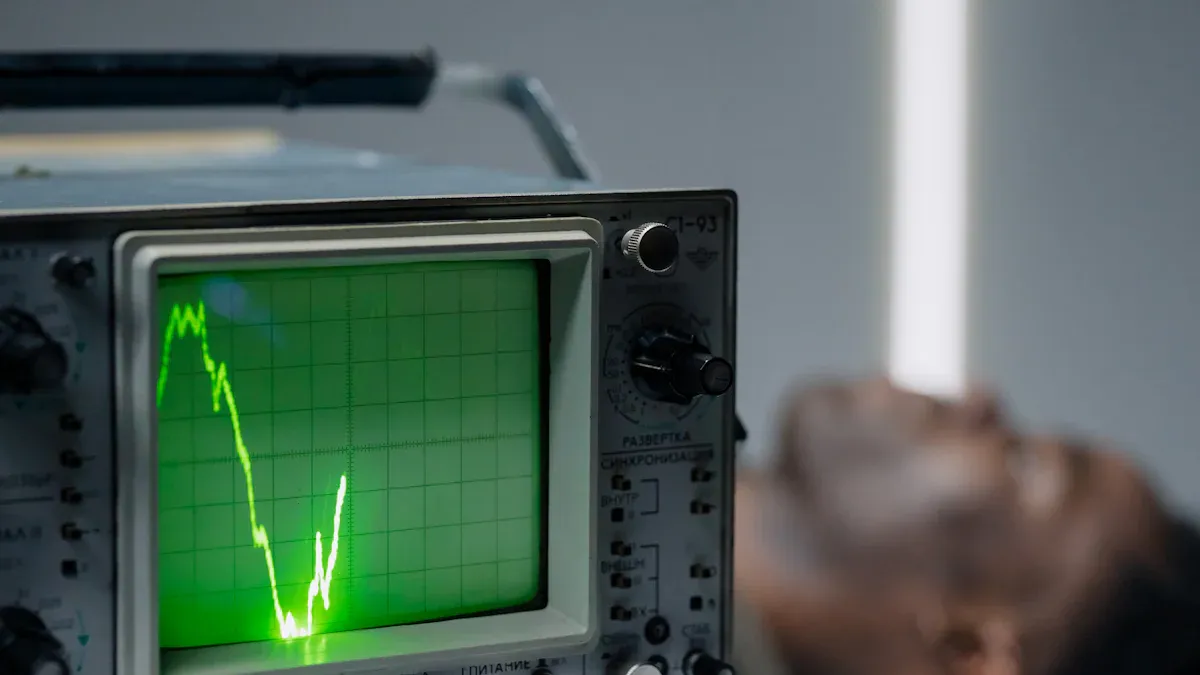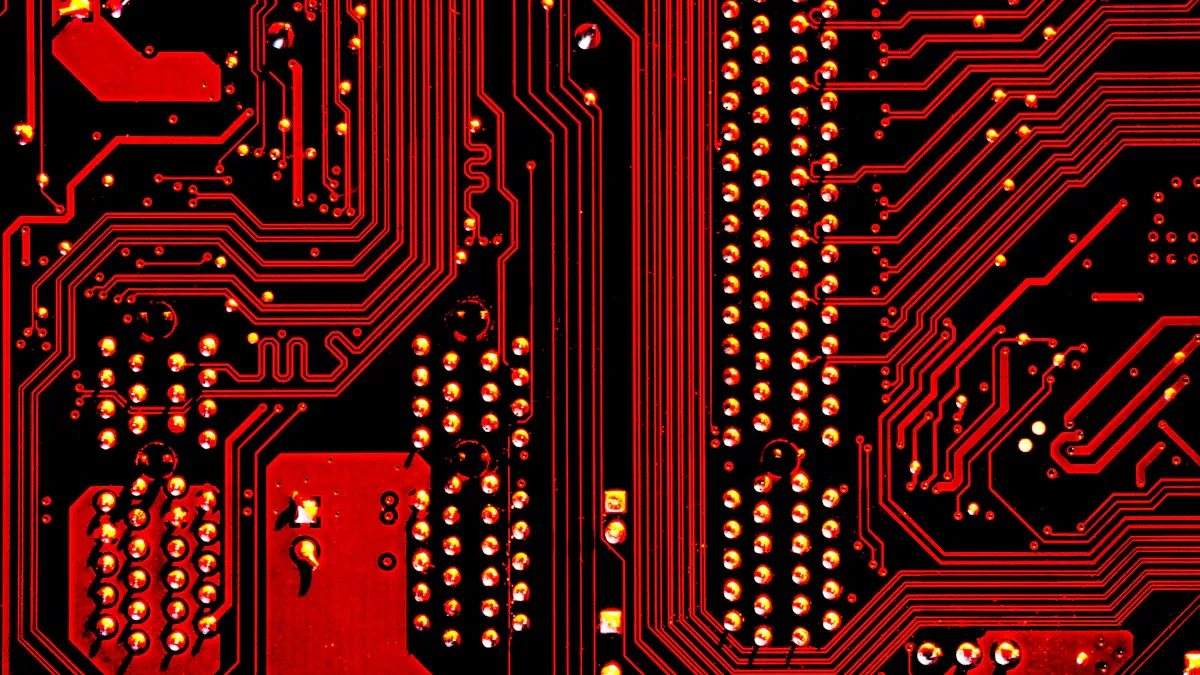What Are Three-Terminal Voltage Regulators and How Do They Work

A three-terminal voltage regulator IC is a small yet powerful device that ensures a stable output voltage for your circuits. It plays a critical role by maintaining consistent voltage levels, even when input voltage fluctuates or the load changes. This stability is vital for protecting sensitive electronic components and ensuring reliable performance.
Why does this matter? Consumer electronics, such as laptops and audio systems, rely heavily on these regulators. The growing demand for such devices, driven by increasing spending power in emerging economies like India, has made these regulators indispensable. They also play a key role in industrial applications where stable voltage is crucial for high-power systems. By using a three-terminal voltage regulator IC, you can safeguard your circuits while simplifying your design process.
Key Takeaways
Three-terminal voltage regulators keep the output voltage steady. This protects delicate electronic parts from harm.
These regulators are easy to use with just three connections: input, output, and ground.
They have features like heat protection and overload safety for better reliability.
Common models like the 7805 and LM317 work well in gadgets and factory machines.
Adding capacitors to circuits makes voltage stable and lowers noise. This boosts how well the circuit works.
Understanding Three-Terminal Voltage Regulator ICs

Definition and Basic Structure
A three-terminal voltage regulator IC is a compact device designed to maintain a stable output voltage. It has three main terminals: input, output, and ground. These terminals simplify the connection process, making it easy to integrate the regulator into your circuit.
Internally, the structure of this IC is more complex than it appears. Here’s a breakdown of its key components:
Error Amplifier: This component compares the output voltage with a reference voltage and adjusts the regulation accordingly.
Voltage Reference: A precise internal reference ensures the output voltage remains consistent.
Series-Pass Element: Typically a transistor, this acts as a variable resistor to control the output voltage.
The block diagram of a three-terminal voltage regulator IC shows how these components work together. It highlights the input voltage, regulated output voltage, and ground connection. This simple yet effective design makes the IC reliable and versatile for various applications.
Purpose and Role in Electronics
The primary purpose of a three-terminal voltage regulator IC is to provide a constant output voltage, regardless of changes in input voltage or load conditions. This stability is crucial for protecting sensitive electronic components and ensuring the proper functioning of your devices.
In electronic circuits, these regulators play several critical roles:
They prevent voltage fluctuations that could damage components.
They simplify circuit design by eliminating the need for complex voltage regulation systems.
They enhance the reliability of devices by maintaining consistent power delivery.
To understand their importance better, consider the following parameters that define their performance:
Parameter | Description |
|---|---|
Input Voltage Range | The range of input voltage the regulator can handle without damage. |
Output Voltage | The target voltage the regulator maintains, which can be fixed or adjustable. |
Output Current | The maximum current the regulator can deliver safely to the load. |
Dropout Voltage | The minimum voltage difference required to maintain the output voltage. |
Efficiency | The ratio of output power to input power, indicating how much power is wasted as heat. |
Thermal Characteristics | The ability of the regulator to dissipate heat, crucial for preventing overheating. |
By understanding these parameters, you can select the right three-terminal voltage regulator IC for your project. Its ability to deliver stable voltage makes it an essential component in both consumer electronics and industrial systems.
Working Principles of Three-Terminal Voltage Regulator ICs
Internal Components and Circuit Design
To understand how a three-terminal voltage regulator IC works, you need to look at its internal components and circuit design. Inside the IC, several key elements work together to regulate voltage effectively:
Error Amplifier: This component compares the output voltage to a stable reference voltage. It ensures the output remains consistent by adjusting the regulation process.
Voltage Reference: A precise internal reference provides a benchmark for the desired output voltage.
Series-Pass Element: Typically a transistor, this element acts as a variable resistor. It adjusts the current flow to maintain the correct output voltage.
Protection Circuits: These include thermal shutdown and current limiting features to safeguard the IC from overheating or overloading.
The circuit design of a three-terminal voltage regulator IC is straightforward. You connect the input terminal to the unregulated power source, the output terminal to your load, and the ground terminal to the circuit's common ground. This simplicity makes it easy to integrate into various electronic systems.
Voltage Regulation Process
The voltage regulation process begins when you supply an unregulated input voltage to the IC. The series-pass element adjusts the current flow to ensure the output voltage matches the desired level. The error amplifier continuously monitors the output voltage and compares it to the internal reference voltage. If the output deviates, the error amplifier signals the series-pass element to correct the discrepancy.
This process happens in real-time, allowing the IC to respond quickly to changes in input voltage or load conditions. For example, if the load suddenly increases, the IC compensates by increasing the current flow to maintain a stable output voltage.
The efficiency of this process depends on factors like the dropout voltage (the minimum difference between input and output voltage) and the IC's thermal characteristics. A lower dropout voltage means the IC can regulate effectively even with a smaller input-output voltage difference.
Feedback Mechanism and Error Amplification
The feedback mechanism is the heart of a three-terminal voltage regulator IC. It ensures the output voltage remains stable by continuously adjusting the regulation process. Here's how it works:
The error amplifier compares the output voltage to the internal reference voltage.
If the output voltage deviates, the error amplifier generates a correction signal.
This signal adjusts the series-pass element, which modifies the current flow to bring the output voltage back to the desired level.
This closed-loop system relies on precise error amplification to function effectively. Testing data shows how the feedback mechanism performs under different conditions:
Figure | Description |
|---|---|
2 | Illustrates the impact of capacitor values on transient response and regulator stability. |
5 | Conceptual closed-loop-load tester showing control of load current. |
24 | Output response to a 100-nsec rise-time current step, showing a decay peak of 75 mV. |
25 | Faster rise-time current step increases response-decay peak to 140 mV, indicating regulation loss. |
The error amplification process also plays a critical role in minimizing noise. For instance, testing data reveals that the LT1761 regulator achieves an output voltage noise of just 20µVRMS in a 10Hz to 100kHz bandwidth. Using bypass capacitors further reduces noise, enhancing the IC's performance:
Figure | Description | Measurement |
|---|---|---|
7 | LT1761 output voltage noise in a 10Hz to 100kHz bandwidth | RMS noise measures 20µVRMS |
10 | Regulator noise for various bypass capacitor (CBYP) Values | Noise decreases with increasing CBYP |
11 | Noise for LT1761-5 vs Three other devices | RMS noise figure approaching the LT1761-5, but in a restricted noise measurement bandwidth. |
By understanding the feedback mechanism and error amplification, you can appreciate how a three-terminal voltage regulator IC maintains stability and minimizes noise in your circuits.
Key Features and Specifications
Line Regulation and Load Regulation
When using a three-terminal voltage regulator IC, you benefit from its ability to maintain a stable output voltage under varying conditions. Two critical performance metrics—line regulation and load regulation—help you evaluate this stability.
Line Regulation measures how well the regulator maintains output voltage despite changes in input voltage. It is typically expressed as a percentage or in microvolts per volt.
Load Regulation indicates the change in output voltage when the load current varies, often expressed as a percentage or in ohms.
Here’s a quick breakdown of these parameters:
Regulation Type | Description |
|---|---|
Line Regulation | Measures output voltage variation due to input voltage changes, ensuring consistent performance. |
Load Regulation | Measures output voltage variation due to load current changes, protecting sensitive components. |
For example, line regulation can be calculated using the formula:% Line Regulation = (VREG(max) - VREG(min)) / (VIN(max) - VIN(min)) * 100
Similarly, load regulation is calculated as:% Load Regulation = (VREG(no load) - VREG(full load)) / VREG(full load) * 100
These metrics ensure your circuits remain stable, even under fluctuating conditions.
Thermal Protection and Overload Safeguards
Heat and excessive current can damage electronic components. To prevent this, most three-terminal voltage regulator ICs include built-in thermal protection and overload safeguards.
Thermal Protection: The IC shuts down temporarily if it overheats, protecting itself and your circuit.
Overload Safeguards: These features limit the current flow when the load exceeds safe levels, preventing damage to both the IC and connected components.
These protections make the IC highly reliable, especially in demanding applications. You can trust it to operate safely even in challenging environments.
Input and Output Voltage Ranges
Understanding the input and output voltage ranges of a three-terminal voltage regulator IC is essential for proper selection and usage. These ranges define the IC’s operating limits and ensure compatibility with your circuit.
Specification Item | Description |
|---|---|
The range of input voltage the IC can accept, including maximum ratings and operating ranges. | |
Output Voltage Range | The range of output voltage that can be set, particularly for adjustable regulators. |
Dropout Voltage | The minimum voltage difference required between input and output for proper regulation. |
For instance, a common fixed regulator like the 7805 provides a stable 5V output, while adjustable models like the LM317 allow you to set the output voltage within a specified range. Always check the datasheet to ensure the IC meets your project’s requirements.
Examples and Applications of Three-Terminal Voltage Regulator ICs

Popular Models (e.g., 7805, 7812, LM317)
Three-terminal voltage regulator ICs come in various models, each tailored to specific needs. Among the most popular are the 7805, 7812, and LM317.
7805: This fixed regulator delivers a stable 5V output, making it ideal for powering microcontrollers and sensors.
7812: Designed for applications requiring 12V, this model is commonly used in audio systems and industrial equipment.
LM317: Unlike fixed regulators, the LM317 offers adjustable output voltage. You can use it in projects where flexibility is essential, such as battery chargers or LED drivers.
These models are widely available and easy to use, making them staples in electronics design.
Common Applications in Electronics
You’ll find three-terminal voltage regulator ICs in a variety of electronic devices. Their ability to provide stable voltage makes them indispensable in many applications:
Consumer Electronics: Devices like smartphones, laptops, and gaming consoles rely on these regulators to ensure consistent power delivery.
Automotive Systems: Voltage regulators play a critical role in powering sensors, infotainment systems, and control modules in vehicles.
Industrial Equipment: High-power systems use these ICs to maintain stable operation and protect sensitive components.
Technical evaluations highlight common challenges in these applications. For example:
Startup issues can arise due to shoot-through currents in linear regulators. Verifying circuit conditions during design helps prevent excessive peak currents.
Improper soldering techniques can damage ICs, affecting power supply circuits. Following recommended soldering conditions ensures reliable operation.
These insights emphasize the importance of proper design and handling practices when using voltage regulators.
Advantages in Circuit Design
Three-terminal voltage regulator ICs simplify circuit design while enhancing reliability. Here’s why they’re so beneficial:
Ease of Integration: With just three terminals—input, output, and ground—you can quickly add these regulators to your circuit.
Protection Features: Built-in safeguards like thermal shutdown and current limiting protect your components from damage.
Versatility: Adjustable models like the LM317 allow you to customize output voltage for different applications.
Market analysis reports further illustrate their advantages:
Segment Type | Key Insights |
|---|---|
Product Type | Low Dropout and Standard regulators; Low-dropout segment expected to grow at 5.8% CAGR. |
End-use Industry | Significant applications in Automotive and Consumer Electronics; Automotive sector to grow at 6.2% CAGR. |
Geography | APAC held 44% market share in 2021; driven by consumer electronics demand and investments. |
These ICs not only simplify your design process but also ensure stable and efficient operation across various industries.
Troubleshooting and Best Practices
Common Issues and Solutions
Voltage regulator ICs can encounter several common issues during operation. Understanding these problems and their solutions can help you maintain reliable performance in your circuits.
Issue Encountered | Description | Typical Solution |
|---|---|---|
A part was returned as a failure without specific details, leading to ineffective troubleshooting. | Gather precise performance data from the customer to avoid guesswork. | |
Environmental Sensitivity | A part failed only at elevated temperatures, which was not initially communicated. | Test components under expected environmental conditions to identify failure modes. |
Grounding Issues | Noise coupling due to improper grounding led to failures in the circuit. | Ensure separate grounds for noisy and quiet supplies to prevent cross-contamination. |
Reliability studies, such as those using MIL-HDBK-217F or FIDES methods, can also help you predict failure rates and identify potential weak points in your design. These tools provide valuable insights into the durability of voltage regulator ICs under various conditions.
Statistical Method | Description | Relevance to Voltage Regulators |
|---|---|---|
MIL-HDBK-217F | A military handbook used for failure analysis over the last two decades. | Provides failure rate analysis for components. |
FIDES | A method for reliability prediction in electronic components. | Useful for understanding common failure modes. |
RIAC | A reliability analysis tool for assessing component failure rates. | Relevant for voltage regulator ICs in power converters. |
Role of Capacitors in Stabilization
Capacitors play a crucial role in stabilizing the output voltage of regulator ICs. They help smooth out fluctuations and improve the overall performance of your circuit. For example:
Capacitors stabilize voltage outputs from triboelectric nanogenerators (TENGs).
They transform TENG's output into a stable voltage with tunable amplitude.
This process achieves an enhanced short-circuit current of 94 mA while keeping energy loss below 5%.
Adding capacitors to your circuit reduces noise and ensures a steady voltage supply, even under varying load conditions. Always choose capacitors with appropriate values based on your regulator's specifications for optimal results.
Tips for Proper Installation and Usage
Proper installation ensures your voltage regulator IC operates efficiently and reliably. Follow these best practices:
Design your PCB layout carefully to minimize noise and interference.
Use separate ground planes for noisy and quiet supplies to prevent cross-contamination.
Consider the IC's moisture sensitivity and follow packaging and baking guidelines to avoid damage during assembly.
Topic | Description |
|---|---|
Package Construction | Detailed information on the construction of the package. |
PCB Design Guidelines | Guidelines for designing the PCB layout for µModules. |
Information on moisture sensitivity, packaging, shipping, and baking. | |
Board Assembly Process | Steps and considerations for the board assembly process. |
By adhering to these tips, you can enhance the reliability of your voltage regulator ICs and ensure long-term performance in your circuits.
Three-terminal voltage regulator ICs play a vital role in ensuring a stable power supply for your electronic circuits. Their ability to maintain consistent voltage protects sensitive components and enhances the reliability of your designs.
Tip: These regulators simplify your circuit design while offering built-in safeguards like thermal protection and overload prevention.
You’ll find them easy to use, versatile, and suitable for a wide range of applications—from consumer electronics to industrial systems. Start exploring models like the 7805 or LM317 for your next project. They’re a great way to improve performance and ensure long-term stability in your designs.
FAQ
What is the difference between fixed and adjustable voltage regulators?
Fixed regulators provide a constant output voltage, such as 5V or 12V. Adjustable regulators, like the LM317, let you set the output voltage within a specific range using external resistors. Choose based on your circuit's needs.
Can I use a three-terminal voltage regulator for high-current applications?
Most three-terminal regulators handle moderate currents, typically up to 1.5A. For higher currents, use external components like power transistors or opt for specialized high-current regulators.
Why are capacitors important in voltage regulator circuits?
Capacitors reduce noise and stabilize the output voltage. Place one capacitor at the input and another at the output to improve performance. Use values recommended in the regulator's datasheet for optimal results.
How do I prevent overheating in a voltage regulator?
Ensure proper heat dissipation by attaching a heatsink to the regulator. Avoid exceeding the input voltage and current limits specified in the datasheet. Thermal protection features in the IC also help safeguard against overheating.
Can I use a three-terminal voltage regulator with a battery?
Yes, you can use it to regulate voltage from a battery. Ensure the battery's voltage exceeds the regulator's dropout voltage. For adjustable regulators, set the output voltage to match your device's requirements.
See Also
Exploring Battery Charge Controller ICs And Their Functionality
A Guide To Battery Charger Controller ICs And Applications
IC Line Drivers Explained: Their Role In Electronics
Gate Inverter IC Chips: Functionality And Applications Explained
Utilizing Schottky Barrier Power Rectifiers In Electronic Circuits
